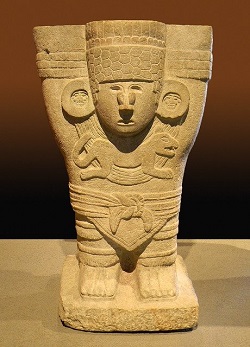Indian Ancient History GK MCQs
Overview:
| Questions and Answers Type: | MCQ (Multiple Choice Questions). |
| Main Topic: | General Knowledge. |
| Sub-topic: | Indian Ancient History. |
| Number of Questions: | 5 Questions with Answers. |
Ancient Indian History MCQs (Multiple Choice Questions) with answers for various state exams and UPSC civil services Exams. Learn and prepare Objective type Questions on Ancient Indian History.
Monolith Design:

1. During the period of the Gupta dynasty in ancient India, the towns Ghantasala, Kadura, and Chaul were well-known as-
- Pilgrimage sites.
- Places of great architecture.
- Ports handling foreign trade.
- Places for getting higher education.
Answer: (c) Ports handling foreign trade.
Solution: Ghantasala and Kadura were the areas of present-day Andhra Pradesh. Chaul was in Maharashtra.
Solution: Ghantasala and Kadura were the areas of present-day Andhra Pradesh. Chaul was in Maharashtra.
2. Who of the following was the founder of the Sunga Dynasty?
- Devabhuti.
- Vasudeva.
- Agnimitra.
- Pushyamitra.
Answer: (d) Pushyamitra.
Solution: Pushyamitra assassinated Brihadratha, the last Mauryan ruler and founded the Sunga Dynasty.
Solution: Pushyamitra assassinated Brihadratha, the last Mauryan ruler and founded the Sunga Dynasty.
3. One of the following sites is not a Harappan site. What is it?
- Desalpur.
- Chanhudaro.
- Sohgaura.
- Kot Diji.
Answer: (c) Sohgaura.
Solution: Sohgaura is a place in Uttar Pradesh, and it is the place, where the Sohgaura copper plate inscription is found. The inscription is written in Prakrit in the Brahmi script and records a royal order to distribute grains carefully.
Solution: Sohgaura is a place in Uttar Pradesh, and it is the place, where the Sohgaura copper plate inscription is found. The inscription is written in Prakrit in the Brahmi script and records a royal order to distribute grains carefully.
4. Which one of the following statements is not correct with reference to Harappan/Indus valley civilization?
- Slaves were present in Harappa.
- Indus valley civilization was a highly complex and advanced civilization.
- Stone was used in making houses during the Indus valley civilization.
- Indus valley society was patriarchal in nature.
Answer: (c) Stone was used in making houses during the Indus valley civilization.
Solution: Stone was not used in making houses during the Indus valley civilization. A large portion of the house was built of burnt bricks and wood.
Solution: Stone was not used in making houses during the Indus valley civilization. A large portion of the house was built of burnt bricks and wood.
5. The Great Bath ( The most famous building of Mohenjodaro) was excavated by-
- Sir John Marshall.
- Sir Edward Stanley.
- Sir William Harvey.
- None of the above.
Answer: (a) Sir John Marshall.
Solution: The Great Bath was found during the excavations that led to the discovery of Harappa and Mohenjo-Daro. Sir John Marshall was the Director-General of the Archaeological Survey of India from 1902 to 1928.
Solution: The Great Bath was found during the excavations that led to the discovery of Harappa and Mohenjo-Daro. Sir John Marshall was the Director-General of the Archaeological Survey of India from 1902 to 1928.
General Knowledge Questions
Ancient Indian History
Indian Ancient History GK MCQs-1
Indian Ancient History GK MCQs-2
Indian Ancient History GK MCQs-3
Indian Ancient History GK MCQs-4
Indian Ancient History GK MCQs-5
Related Topics
Basic General Knowledge
Biology
Books and Authors
Chemistry
Famous Places
Indian Famous Personalities
Important Dates and Days
Indian Art & Culture
Indian Economy
Indian Environment and Biodiversity
Indian Geography
Indian Ancient History
Indian Medieval History
Indian Modern History
Indian Polity and Constitution
Indian Organizations
International Organizations
Physics
Physical Geography
Sports
World Geography